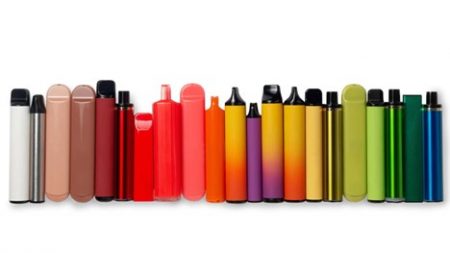What is it?
Vapes are electronic devices that are used to consume the drug nicotine or thc products for more information about thc check out our Cannabis/Marijuana page. These devices heat a liquid solution to create an aerosol, often referred to as vapor and come in various shapes, sizes, and flavors. Disposable vapes are now the most popular type of device, accounting to 54.8% of total e-cigarette sales in 2023. These devices come fully charged and are filled with e-liquid by the manufacturer. Vaping was found to be in the top 3 highest lifetime substances used in grades 9-12 at 11.6% in the 2023 Youth Voices Count survey. Due to changes in the brain, quitting is harder for those who start at a young age.
Advertisement

These products are now being marketed towards youth with colorful packaging, sweet flavors, and appealing advertisements. These marketing tactics can potentially attract youth to start using vaping products without fully understanding the risks involved. Among youth who used e-cigarettes in 2022, 55.3% used disposable e-cigarettes. The most popular flavors of disposable e-cigarettes were fruit then followed by candy/desserts/other sweets.
Myths about Vaping
Myth: Flavored Tobacco is now banned
Fact:
- Flavors are banned for reusable vapes such as Juul.
- There is currently no ban on flavors for disposal vapes such as Puff Bar.
- Some argue that flavor bans should be extended to all types of vaping products to discourage use among youth.
Myth: Vapes are not dangerous
Fact: The majority of vaping products include nicotine, a highly addictive substance. Along with this they also contain a mixture of chemicals including:
- Ultrafine particles that can be inhaled deep into the lung.
- Diacetyl which is chemical linked to serious lung disease.
- Heavy metals such as nickel, tin, and lead.
These chemicals can lead to both short-term and long-term health consequences.
Myth: Vaping helps relieve stress and anxiety
Fact: There is a misconception that nicotine alleviates stress. In reality, when nicotine is absorbed into the body, it prompts the release of dopamine, a neurotransmitter associated with relaxation. Once nicotine exits the system, typically after a few hours, dopamine levels decrease, leading to feelings of anxiety and irritability. This is referred to as nicotine withdrawal.
Speaking with your Youth
Know the facts
- Learn about all the misinformation about vaping and what the real harms are.
Set an Example
- Be an example for your youth by not engaging in risk behaviors and promoting a healthy lifestyle.
Have an Open Conversation
- Start the conversation by mentioning an observation.
- Ask questions to see what your youth already know and clear up any misconceptions they may have.
Set Clear Rules
- Set boundaries and expectations for your youth so that there is no confusion.
Sources: National Institute on Drug Abuse; Connecticut Department of Public Health; Federal Food and Drug Administration; US Department of Health and Human Services; American Lung Association; CDC Foundation
Revised April 2023


